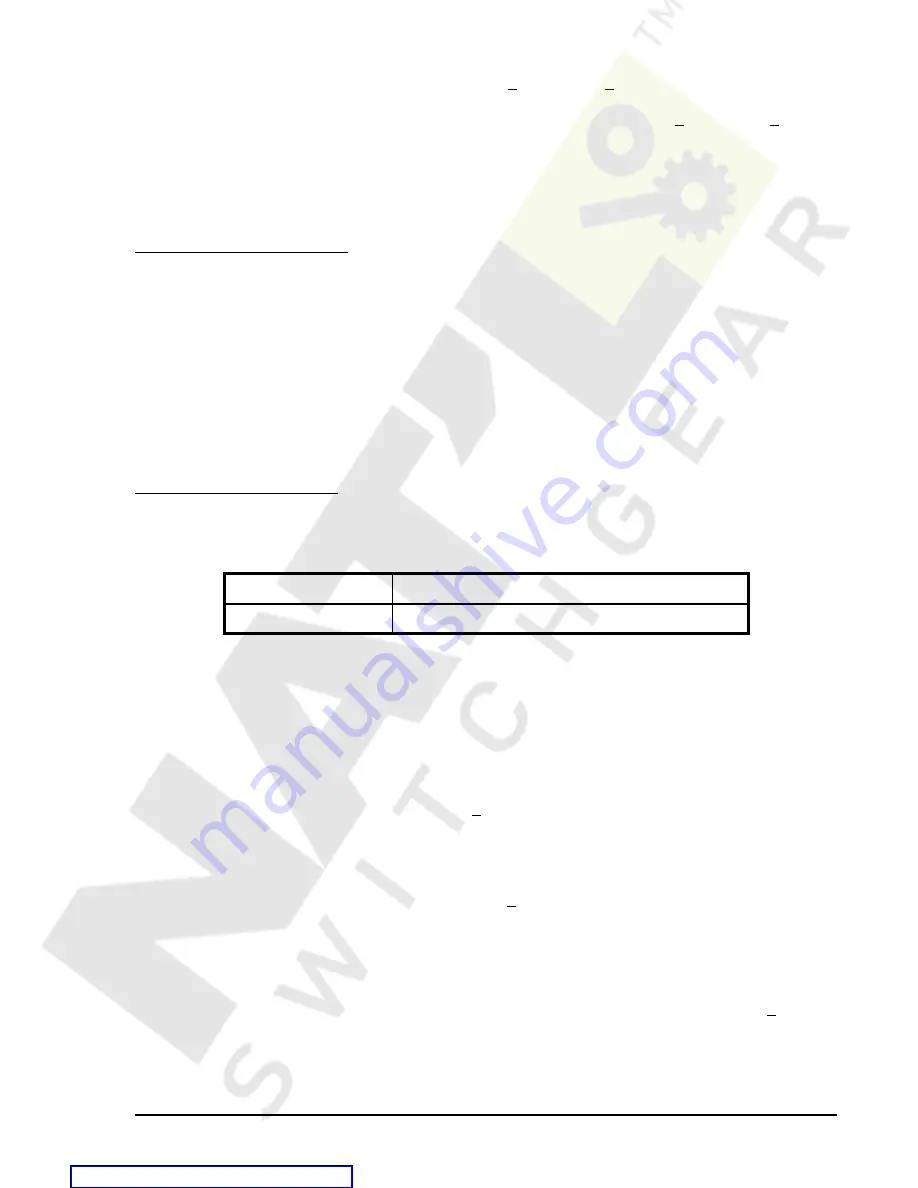
BE1-951
Testing and Maintenance
13-49
Step 4 Step the voltage up to 60 volts. Measure the time delay and verify the accuracy of the dead
dropout time delay setting. Timing accuracy is + 5 percent or + 3 cycles of the time delay setting.
Step 5 Set the ac voltage at 100 volts. Step the voltage down to 90 volts. Measure the time delay and
verify the accuracy of the Live dropout delay setting. Timing accuracy is + 5 percent or + 3 cycles
of the time delay setting.
Step 6 Repeat steps 5 and 6 for the middle and uper time delay settings of Table 13-65a.
Step 7 Connect a second single-phase 50 or 60 Hertz voltage source (Auxiliary VTX) to relay terminals
C17 (polarity) and C18 (non-polarity). Repeat steps 2 through 6.
Step 8 (Optional) Repeat steps 2 through 7 for setting groups 1, 2, and 3.
25VM1 and 25VM2 Output Test
Step 1 With no voltage applied to either the Line or Auxiliary voltage sources, OUT1 should be closed.
This verifies the DEAD-LINE, DEAD AUX output of 25VM1.
Step 2
Apply 0 volts ac to the Line voltage input (VTP). OUT1 contact should be closed. Output 1 will open
as the voltage is increased above the DEAD-LINE setting and close again when voltage exceeds
the LIVE-LINE setting. This verifies the LIVE-LINE, DEAD-AUX output of 25VM1. Remove voltage
source 1.
Step 3
Apply 0 volts ac to the Auxiliary voltage input (VTX). OUT1 contact should be closed. Output 1 will
open as the voltage is increased above the DEAD-LINE setting and close again when voltage
exceeds the LIVE-LINE setting. This verifies the DEAD-LINE, LIVE-AUX output of 25VM1.
Step 4 Transmit SL-VO1=25VM2 to the relay and save it. Repeat Steps 1 through 3 for for 25VM2.
Step 5 (Optional) Repeat Steps 1 through 4 for setting groups 1, 2, and 3.
25 Synchro Check Verification
Step 1 Transmit SL-VO1=25 to the relay and save it.
Step 2 Using Table 13-70 as a guide, transmit the setting commands to the relay.
Table 13-70. Synchro Check Settings
Synchro Check
Purpose
S0-25=10,10,0.3,0
Sets Delta V, Angle, Delta Slip, and GF>BF Mode
Step 3 Prepare to monitor the 25-function operation. Operation can be verified by monitoring OUT 1.
Step 4
As in the previous test, connect relay terminals C13 (A-phase), C14 (B-phase), and C15 (C-phase)
together. Apply a 120 vac, 50 or 60-Hertz ac, 0 degree voltage source (Line VTP) to the three
jumpered terminals and the Neutral terminal (C16).
Step 5 Apply a second 120 Vac, 50 or 60-Hertz ac, 0 degree voltage source (Auxiliary VTX) to C17 and
C18. OUT1 should close verifying the 25 output for a Delta Angle of 0 degrees, 0 Delta V, and 0
Delta Frequency (Slip).
Step 6 Decrease the Auxiliary voltage input (VTX) until OUT1 opens. Slowly increase the voltage until
OUT1 closes. Pickup should occur 2 percent be Delta V setting. Dropout should occur at
97 to 98% of actual pickup.
Step 7 Repeat Step 6 for the Line voltage input (VTP). Return voltage inputs to 120 vac, 50 or 60 Hertz,
0 degrees.
Step 8
Swing the angle between voltage source 1 and 2 until the OUT1 opens. Slowly decrease the angle
until OUT1 closes. Pickup should occur 2 percent be Delta Angle setting, on the leading
and lagging side of 0 degrees. Dropout should occur at 97 to 98% of actual pickup. Return Delta
Angle of 0 degrees.
Step 9
With the Auxiliary Voltage set at nominal frequency, step change the frequency of the Line voltage
input by -0.25 Hertz (59.75 on a 60 Hertz relay). Note that OUT1 is closing and opening based on
a slip rate of 0.25 Hertz. Decrease the frequency until OUT1 stays open. Slowly increase the
frequency until OUT1 begins to cycle (closed/open). Cycling pickup should occur 2 percent
of the Delta Slip setting. Also check on the fast side (60.25 for a 60 Hertz relay)
Step 10 Repeat step 9 for the Auxiliary Voltage input
Step 11 (Optional) Repeat Steps 4 through 10 for setting groups 1, 2, and 3.






























